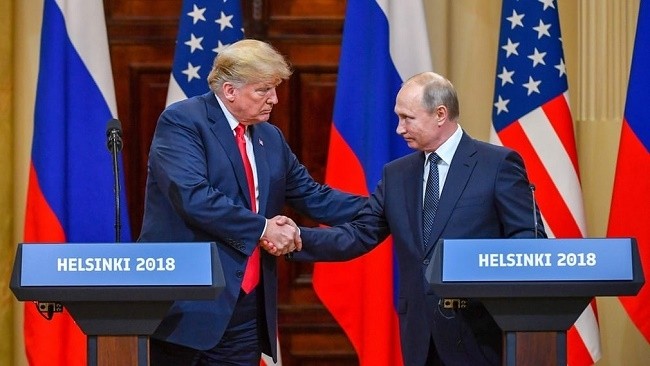According to Russia’s Interfax news agency, the Putin-Trump summit concluded after two hours and 10 minutes. President Trump affirmed that his face-to-face meeting with President Putin was “a good start”. The leaders exchanged views on and discussed an array of thorny problems in Russia-US relations as well as international issues of mutual concern. CNN news agency quoted President Trump as saying, “The world wants to see us get along.” The White House boss stated frankly that the relationship between the two countries has never been “worse” before his summit with President Putin, while voicing his hopes of a “special relationship” between the two sides in the future. Earlier, President Putin also expressed a goodwill viewpoint that it was time for the two sides to have important discussions about bilateral relations and other pressing issues in the world.
In fact, ahead of such a crucial high-level meeting, both the Russian and US sides delivered positive messages. The two countries’ diplomatic officials expressed their goodwill and expectations that the summit would be a stepping stone to unfreeze Russia-US ties. On July 16, Dmitry Peskov, a spokesman for the Russian President, said he hoped that the summit would be a small step towards healing the deteriorating relationship between the US and Russia.
According to Peskov, President Putin respected President Trump’s nationalist position of “America First”, because he also put Russia above all, but stated that the openness of both sides in seeking mutually beneficial areas was the only way to achieve progress at the summit. Earlier, US Secretary of State Mike Pompeo said that President Donald Trump and his Russian counterpart should conduct the scheduled summit between them, which would benefit the US. CBS News quoted Pompeo as saying, “I am confident that President Trump’s meeting with Vladimir Putin will put America in a better place. It’s very important that they meet.”
It seems that the aforementioned harmonious atmosphere created favourable conditions for the summit between the Russian and US leaders to go smoothly. However, the most important basis for the meeting to take place as scheduled is not the fine words mentioned above, but the national interests of both Russia and the US. In the context of a prolonged deadlock in the Syrian crisis, Iran’s growing influence in the Middle East, the complicated developments of the US-China trade war, and Western allies turning their backs on Washington due to trade-related differences, the reconciliation of relations with Russia will help the US to be less lonely in solving many international issues. Meanwhile, as for President Putin, the cooling of Russia’s tense relations with Washington will help to ease Moscow’s pressure concerning the Ukrainian issue and, in particular, help to remove the Russian economy from the pressure of Western sanctions that have held the country and its people back over the past few years.
However, although the Trump-Putin summit took place smoothly, analysts are still not so optimistic about the prospects of the rapidly improving US-Russian relations in the near future. Despite a new start for both sides, it will still take time for them to overcome the old challenges and barriers. Prior to the meeting of the Russian and US leaders, some Western analysts commented that the wind has still yet to change direction in the US-Russia relations because of a systemic confrontation between the two sides. The latest evidence is that, a few days before the summit, the US officially charged 12 Russian citizens tied to cyberattacks intended to interfere with the 2016 US presidential election. This shows that there still remains many voices which support a tough policy for Russia right inside the US. In addition, the inherent disagreements between the two powers, concerning the Ukrainian crisis and the Syrian war, are not something easily resolved through a single meeting.
















